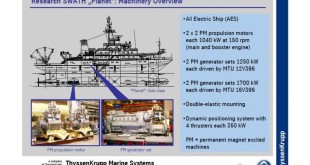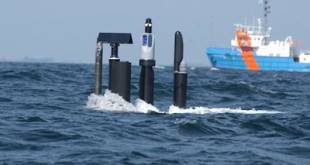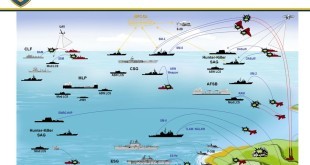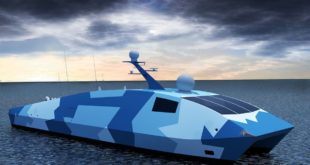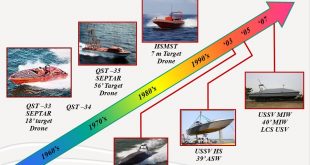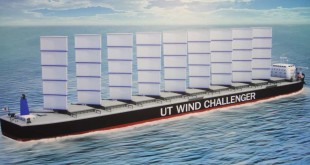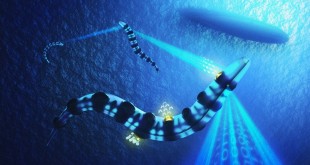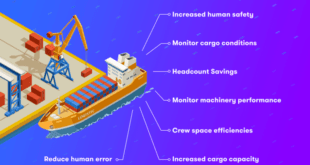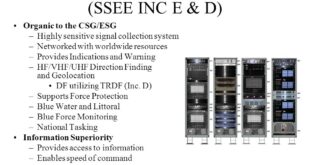Marine propulsion is the mechanism or system used to generate thrust to move a a naval vessel across water. At present, 90% of the sea-going naval ship are diesel-powered. There are numerous benefits to electric motor propulsion including that it’s quieter, more efficient at lower speeds and less smelly. It’s …
Read More »Photonics Masts are critical subsystems of Submarine imaging, navigation, electronic warfare and communications system
A submarine is a naval platform that can stay underwater for an extended period to carry out missions, both offensive and defensive. It is a complex platform that includes multiple components. As radio waves cannot propagate in water, communication with submarines is difficult. To overcome this issue, submarines are being …
Read More »US Navy “Distributed Maritime Operations (DMO),” strategy integrating diverse autonomous unmanned vehicles UUV, USVs, UAVs
The US Navy published a navigation plan to boost the war vessels to 500 by 2045 in the region citing “both a current and long-term challenge.” Reiterating that China is the central threat to the US Navy’s maritime dominance, the report says: “This is a critical decade. As global challengers …
Read More »DARPA’s NOMARS developing long endurance Autonomous warship for surveillance, targeting, electronic warfare and strike warfare
In 2018, China surpassed the U.S. Navy as the world’s largest naval force. China has now launched a new “world-leading unmanned warship” that is supposedly ready for combat, Chinese media reports. The JARI multi-purpose unmanned combat vessel, a new product of the state-owned China Shipbuilding Industry Corporation, is 50 feet …
Read More »Mine Countermeasures (MCM) technologies for Anti-Submarine Warfare (ASW) , Surface Warfare (SUW) , and counter terrorism missions
Sea mines are one of the cheapest and most dangerous threats for naval forces; a reality experienced in both World Wars and the Korean War. In order to mitigate the impacts and risks of sea mines on naval operations, advanced navies have been increasing their investments in autonomous Mine Countermeasure …
Read More »New Wind propulsion concepts and technologies to enable Wind-assisted Commercial ships and tankers navigating the seas
Marine propulsion is the mechanism or system used to generate thrust to move a ship or boat across water. The Navy and industry are investing in propulsion technologies that offer the potential to improve future naval ship designs. The goals of the current and planned technology development efforts are to improve …
Read More »Future Submarine concepts and technologies from mind controlled, ultrafast, laser communications to launching UUVs and UAVs.
Germans were first to demonstrate the revolutionary capability of submarines in World War I, by both sinking enemy combatants and interdicting commerce. Modern Submarines have become one of the deadliest weapons which are hardest to detect. They are literally a pile of submerged nuclear weapons ready to unleash widespread destruction …
Read More »Raytheon’s AN/SPY-6(V) is and integrated air and missile defense naval radar that can track multiple ballistic and cruise missile targets.
Navies around the world are increasingly facing formidable strategic and threat environments in terms of complexity, lethality, range, sophistication and number of threats. Many of these threats, including long-range anti-ship cruise missiles, can travel hundreds of miles to their targets, toward surface ships challenged to detect the approaching weapon with …
Read More »Autonomous shipping or Autonomous shipping or Maritime Autonomous Surface Ships (MASS) technologies
Autonomous ships refer to the ships that are remote built ships where operations are performed by remote control mechanism. These operations are operated by the humans located at the shore. Autonomous requires high quality systems and reliable communication system which work with the assistance of connectivity, control algorism and sensor …
Read More »US Navy’s Ship’s Signals Exploitation Equipment (SSEE)
Signals intelligence (SIGINT) is intelligence-gathering by interception of signals, whether communications between people (communications intelligence—abbreviated to COMINT) or from electronic signals not directly used in communication (electronic intelligence—abbreviated to ELINT). The abbreviation SIGINT – Signals Intelligence – stands for collecting and analyzing of information from radar- and radio-signals. Because …
Read More » International Defense Security & Technology Your trusted Source for News, Research and Analysis
International Defense Security & Technology Your trusted Source for News, Research and Analysis
